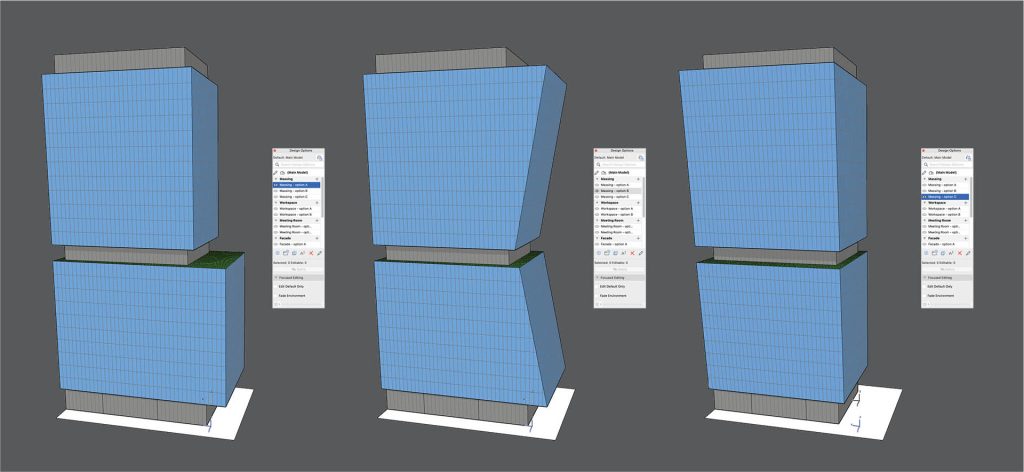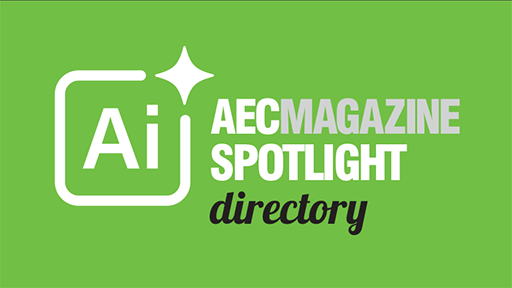Graphisoft recently hosted its annual product release at its HQ, next to the Danube in Budapest. With a new CEO, an ever-broadening multi-disciplinary product suite and a drive to subscription, Martyn Day found a company focussed on extending its global footprint
Graphisoft is part of the Nemetschek Group, which comprises thirteen AEC related brands, three of which are BIM modellers.
While the brands are individually strong, it’s taken a while for Nemetschek to realise that together they can represent a connected ecosystem solution for the whole AEC industry. This has resulted in a change of strategy, with growing interconnected workflows and now brand separated teams working together on company-wide technology innovation.
Graphisoft, which has Archicad as its flagship BIM platform, is set to become a major beneficiary of Nemetschek’s new pan-brand accelerated development.
I’ve always felt it was in Graphisoft’s DNA to be a ‘secret squirrel’ when it came to talking about new technology, beyond the current release. On this trip to the HQ in Budapest, I finally realised why.
Jump to section on AI / ML and legacy code
Unlike most other developers in the industry, which have already transitioned to subscription-based sales, Graphisoft has been some way behind the curve into moving into that business model. This has meant that every release needed to perform and appeal to customers. The company’s marketing and focus needed to be on the latest release and the benefits of that yearly update, not on features that were still years away. The net result was we only got only vague insight into the future roadmap.
In 2023, Graphisoft took a significant step forward by beginning to circulate comprehensive product roadmaps for Archicad, BIMcloud, BIMx, and DDScad (MEP – mechanical, electrical, plumbing). These roadmaps categorised the status of various features as ‘under research’, ‘in progress’, ‘coming soon’, and ‘delivered’.
Graphisoft also introduced a Technology Preview Program, to share and experiment with forthcoming features, so users can have input on the development and evolution of Archicad.
This year, we were invited to play with a range of augmented reality (AR) and artificial intelligence (AI) technologies that are still in the experimental phase, sparking discussions about the transformative potential of AI within the AEC sector.
The transition to a subscription model has evidently fostered a more open dialogue from Graphisoft’s product managers, who now appear more inclined to speculate on the future trajectory and capabilities of BIM 2.0, as well as the broader applications of technology across the AEC market.
This is indeed an opportune moment for AEC technology developers, as the landscape is ripe with possibilities for the creation of innovative solutions. The shift towards a subscription model potentially enhances customer engagement, and also allows for a more agile response to market demands and technological advancements. As Graphisoft continues to evolve and adapt to the changing dynamics of the industry, the potential for collaboration and integration among the various Nemetschek brands will likely yield significant benefits for architects and other professionals within the AEC sector.
The strategic realignment within the Nemetschek Group, coupled with Graphisoft’s newfound transparency regarding its product roadmap, heralds an exciting chapter for the company. Graphisoft is fostering a future where technology not only enhances customer’s design capabilities but also fosters a more interconnected and collaborative approach to building and construction. The journey ahead promises to be filled with opportunities for growth, innovation, and the advancement of our profession.
Graphisoft 2024 lineup
Graphisoft’s core product, Archicad, is now in its 28th revision. For an opener, this year’s update offers a substantial 30% improvement in performance and the development team is impressed with Apple’s new ‘system on a chip’ silicon-based systems. Asked if Graphisoft would support the ARM version of Windows, it seemed the company had the software compilers and were working towards future support for Archicad on ARM.
There are the usual UI tweaks, like a new home page start point on launch. Improved model exchange support through IFC, RFA and RVT for Revit. New support for Information Delivery Specification (IDS) format – a protocol for enabling the construction sector to establish and validate BIM specifications, leading to the automation of quality assurance checks and categorisation. Graphisoft has also added support for BIM Collaboration Format (BCF) 3.0.

Advanced distance arrows / guides give excellent measurement feedback when moving and positioning to relative geometry. Roof openings can be created quicker and more consistently in an expanded Opening Tool. There’s a flexible global library,
‘Keynotes’ debut in Archicad 28, to enable a database-driven documentation system that integrates specifications and legends. This is streamlined by automating annotations, eliminating the manual workarounds that were previously required for maintaining consistency across project documentation sets.
Architects face a common challenge when presenting multiple design concepts to clients. The process typically requires many hours to manually create different versions of the same project. Archicad’s new Design Options delivers a new workflow within a single project file. Users can create variations for a whole building or focus just on specific areas. Different façade treatments or interior layouts are good examples. These alternatives work independently, allowing for smooth 2D and 3D views and are compatible with annotations, sections, and elevations. It’s possible to merge, duplicate, or rearrange options within the workflow. This is a very powerful technique, and one that is used in the more advanced mechanical CAD tools. It reduces the need to start multiple project files to develop different options.
Archicad has improved Rhino-Grasshopper connection which supports the latest version of Rhino. It offers increased speed with a built-in parametric hotlink capability, where Archicad geometry becomes hotlinks in Grasshopper – enabling capabilities such as laying out of buildings. Beam and column support has also been extended.
The Archicad AI Visualizer, which was originally desktop-based, now runs in the cloud, which means it doesn’t have to be installed, and users don’t need powerful local GPUs. The software takes Archicad designs and uses AI to generate photorealistic images based on text prompts. To change a material, the user simply alters the text prompt and the image is regenerated.
Graphisoft still has strong links with Chaos Group and its Enscape renderer too for more traditional viz output. The new Chaos AI Enhancer is also accessible to Archicad users, delivering exceptionally smooth daylight shadows. In fact, there are no shortages of rendering tech, as there is also Graphisoft’s stablemate, Maxon, which offers Redshift and Cinema 4D too.

There’s a new LCA (Life Cycle Assessment) analysis capability provided by third party developer One Click, to give fast feedback on lifecycle assessments and life cycle costing of their various design options.
Point cloud has been improved with the inclusion of a ‘Lite’ layer of functionality from third-party developer, BIMmTool, aimed at assisting renovation and refurbishment projects within Archicad. It means Archicad can now handle larger data sets, leading to faster workflow. To maintain speed while handling dense point clouds, the software displays distant point clouds at lower resolution.
Users that want even more power can upgrade to the full version from BIMmTool, which supports the direct import of common point cloud formats, such as Leica, Faro, Riegl and others. Thanks to multiprocessing support and sampling, BIMmTool supports large scan projects easily, while the Pointcloud switcher allows precise control over point cloud display in Archicad views. The full version also provides a suite of tools for modelling off point clouds, as well as analysis for deviation of reality vs BIM.
Archicad also offers improved integration with its sister Nemetschek brands, including Solibri for design checking / validation and Bluebeam for PDF-based collaboration.
DDScad for MEP
In June 2022, Graphisoft merged with its sister company, DDScad, adding the mechanical, electrical and plumbing (MEP) expertise of DDS to its BIM platform. This was a major step forward to producing a like for like multi-disciplinary BIM system to compete with Revit. Unfortunately, the Archicad brand obfuscates the fact that the BIM tool is more than just about architecture. It now offers MEP, as well as structural, through other Nemetschek brands. The integration work is significant and Graphisoft maintains DDScad as a standalone product for its significant European installed base.
DDScad is an advanced MEP solution which designs ductwork specifications with flow rate optimisation, with an easy-to-use browser-based system to visualise routes. It also delivers streamlined cable tray and piping workflows and real-time size optimisation, based on flow requirements.
Customers want to buy into a technology firm that has a vision and can show velocity of innovation. BIM software needs to deliver considerably more productivity to users and I don’t get the feeling Graphisoft is resting on its laurels
New for this year, there are enhancements to photovoltaic system design, busbar trunking design and modelling and generic workflow improvements, specifically allowing electrical engineers and architects to exchange models easily. Lighting design also gets updated with an improved DIAlux-evo electrical connection, for planning, calculation and visualisation of lighting. Dial is the company which develops DIAlux-evo in Germany and is available free of charge in 26 languages.
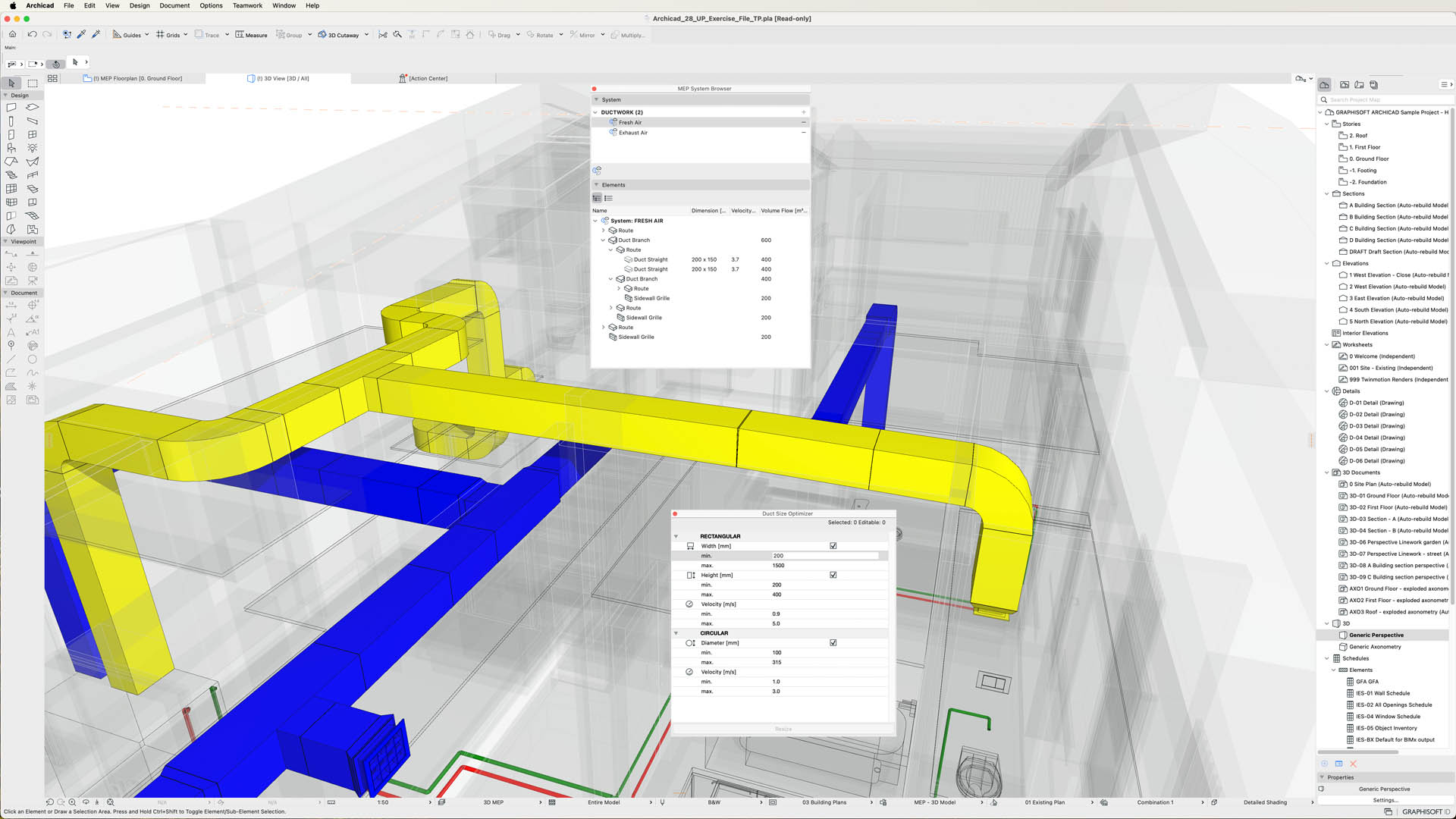
BIMcloud for collaboration
Graphisoft’s cloud-based data platform, BIMcloud, for architects, engineers, and constructors enables real-time collaboration on projects. BIMcloud has 13 regional data centres worldwide through Graphisoft’s partnership with Google Cloud Platform.
While BIMcloud was slow to gain adoption, like all cloud collaboration tools it has started to get traction post COVID, with remote working and distributed teams growing and fears of cloud subsiding. This year, multi-factor authentication is being added to build in more security and Graphisoft is offering it as a turnkey service.
BIMx for presentations
Graphisoft’s collaboration and presentation tool, BIMx, now supports antialiasing, leading to better quality model edge definition. The new release also provides feature unification across all supported platforms, mobile, web and desktop – macOS, Safari, Windows, Firefox, IOS, Android, Chrome and others.
There are more controls to filter visibility options to enable the viewing of design options, renovations and structure. This is easy to use and an incredibly effective visual aid when showing clients.
BIMx now supports the Apple Vision Pro, although since the announcement Apple has paused production of the high-resolution headset, and rumours are that work on the second generation has been suspended. We hope this work progresses once Apple figures out the way ahead.
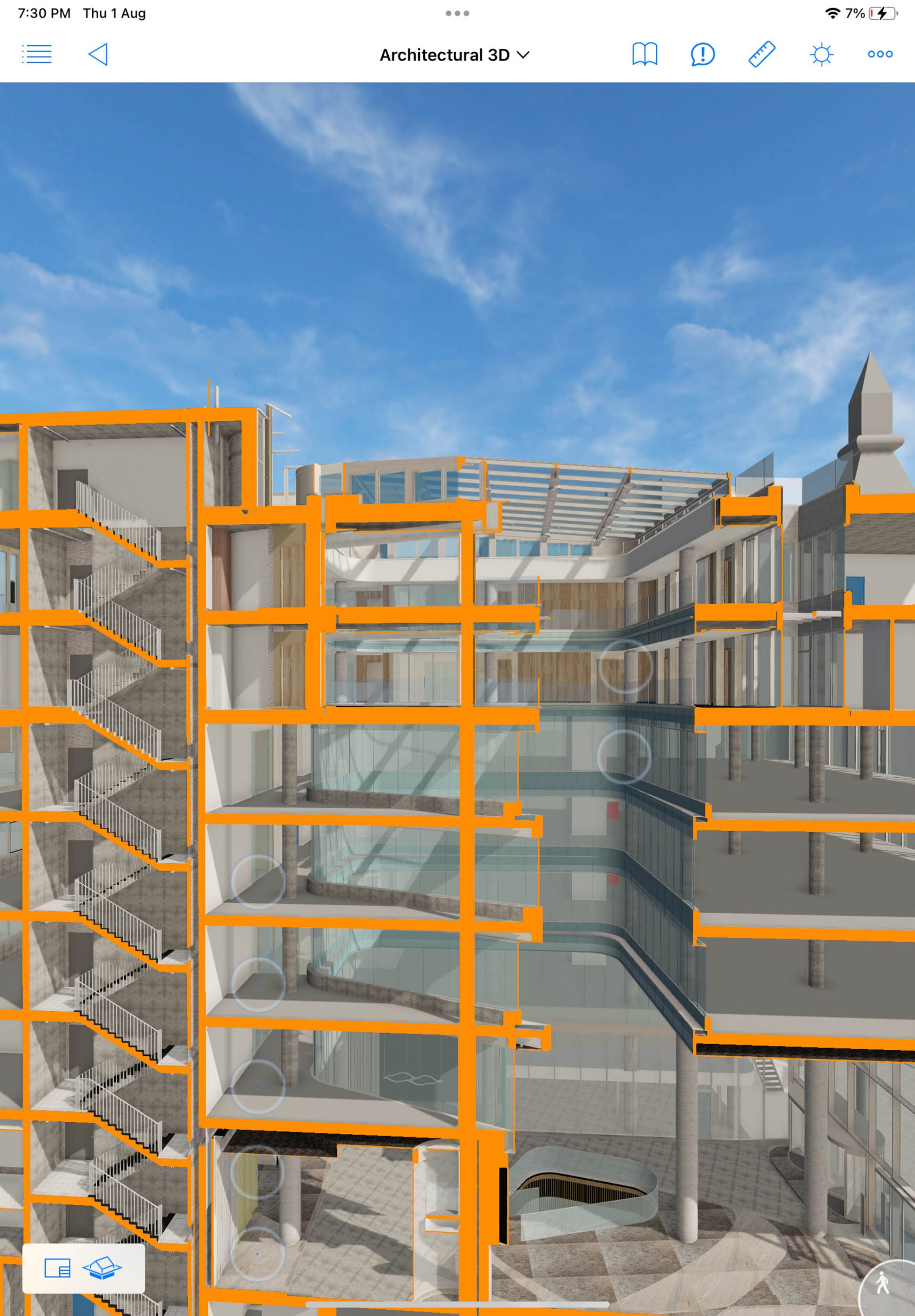
Autodesk Nemetschek API deal
In April this year, Nemetschek and Autodesk signed an agreement to advance and open interoperable workflows between their products. This was great news and included the exchange of software, API developer access and for Nemetschek to access Autodesk Platform Services APS (formerly Forge). This lowered the bar of entry for Nemetschek to connect Bluebeam, BIMcloud and BIMplus to Autodesk Forma, Autodesk Fusion, Autodesk Construction Cloud (ACC) and design products.
While it’s still early days, it was interesting to discuss the opportunities this might present to Graphisoft. It’s possible that Graphisoft could develop tools that rely on APS, which essentially is Autodesk’s modularised services, like viewing tools, file translation, design automation, and even access to the new granular data and geometry feeds from Autodesk Docs, which were launched this year.
Co-opetition is a strange new world as AEC firms open up, but it was encouraging to hear that Graphisoft’s team were aiming to make use of this agreement in building connected AEC workflows, trying to remove the historic silos.
Architecture tour
During the CAD conference in Budapest, Graphisoft organised a notable architectural excursion to refresh our minds away from BIM software discussions. The destination was Napraforgó utca (Sunflower Street), situated near the intriguingly named ‘Devil’s Trench’, a significant modernist development. The estate comprises 22 structures commissioned for the 1930 International Architecture Congress.
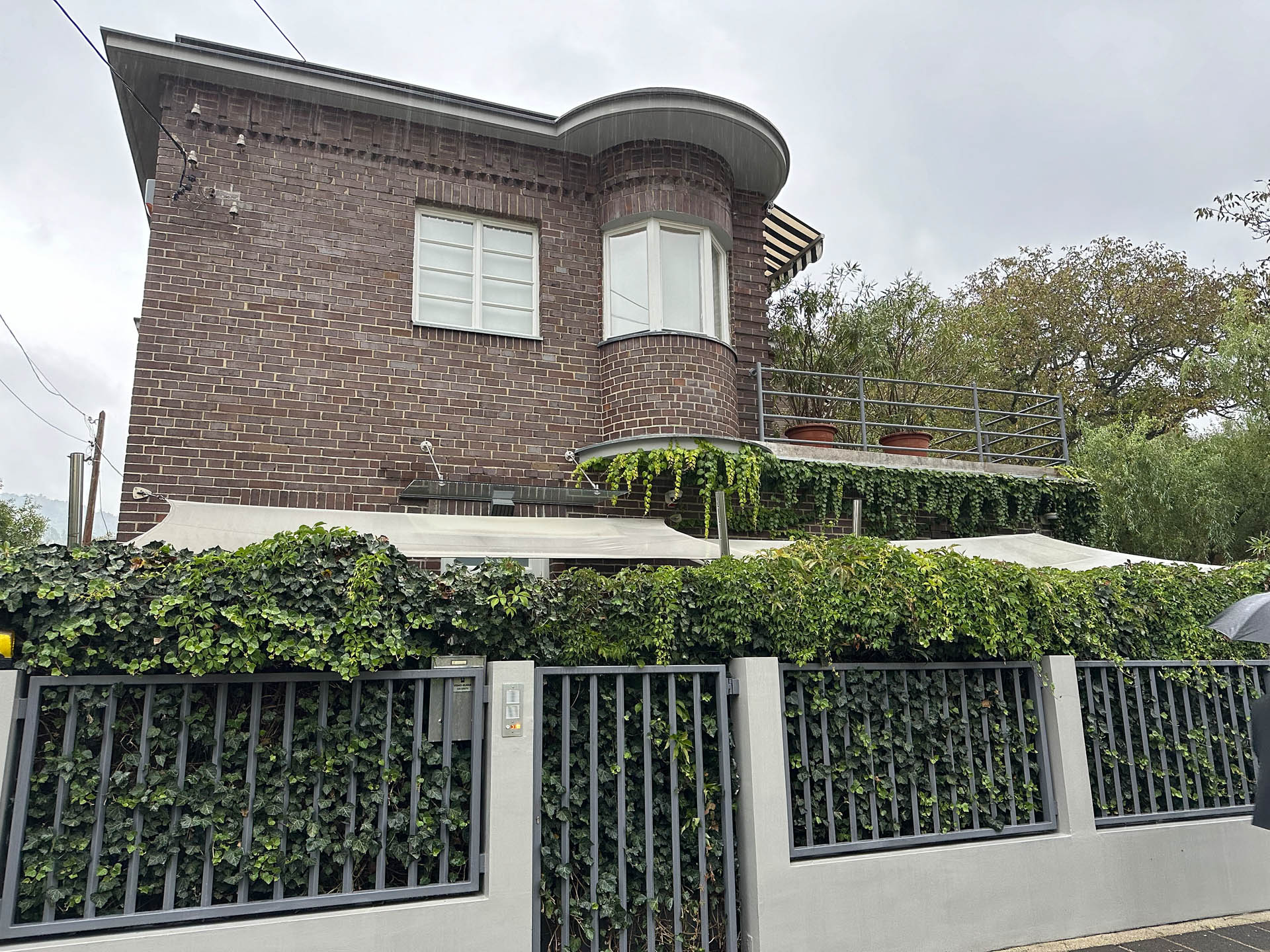
The project featured 18 distinguished architects, including Henrik Böhm, József Fischer, Alfréd Hajós, Ármin Hegedűs, Lajos Kozma, and Farkas Molnár. This remarkable collection of Bauhaus-style modernist villas remains predominantly residential, with one property, formerly the house of an opera singer, on Bajza utca functioning as a public museum.
From seeing the original photographs, the estate was clearly built near the northern outskirts of the Buda side of the city, but since then the urban sprawl of a nation’s capital city has somewhat swallowed it up. If you are in Budapest, and a fan of modernism, it’s well worth the trip.
Conclusion
It’s incredible how broad the Graphisoft software and services portfolio has grown – now catering to architects, electrical engineers, mechanical engineers, sustainability experts, construction specialists, and arch viz experts, extending out to surveyors, and then customers with BIMx. With each release, the span of software development grows.

This release also sees Graphisoft do something else it has not been so good at in the past – working with third parties. Bringing in BIMmTool and One Click LCA, this enables ‘lite’ layers of functionality to be integrated, exposing their customers to third party tools which build on the functionality provided, adding extra levels and layers to Archicad’s capabilities.
Graphisoft will convert to selling only new subscription licences from 2026 which is a sure-fire way to rile up the base as inevitably the cost of ownership goes up. This can be assuaged to a degree by offering more value and much longer low-cost subscription deals. The messy bit with subscription is time and price inflation – compound inflation eventually adds up to make an expensive solution and software providers fall foul with even their in-house product champions. However, maybe in ten years, AI will mean that eventual seat sales of software may have to make way for a new value-based pricing model.
It’s interesting how attitudes are changing in the software development community. While I am not a massive fan of subscription for many reasons, there is one positive thing that is coming from it and that is open product development. It’s no longer about selling the next release and trying to get as much of the base to buy in to this year’s features. We have moved decisively to open development, where customers get a much longer view of where software development teams have been going.
Customers want to buy into a technology firm that has a vision and can show velocity of innovation. BIM software needs to deliver considerably more productivity to users and for the first time in 20 plus years there are some new kids on the block. I don’t get the feeling Graphisoft is resting on its laurels, and that sentiment now spans the whole Nemetschek Group.
AI / ML and legacy code
In a CAD world full of artificial intelligence (AI) and machine learning (ML), it will be obvious to see that there is not a lot of innovative AI shipping with Archicad currently. The most notable component was this year’s inclusion of the AI Visualiser tool, but this was released in a world of exploding AI visualisation tools, which basically all do the same thing – harness ChatGPT with and AI renderer (Stable Diffusion), using BIM geometry as the seed. EvolveLab was first to market with Veras in December 2022.

AI Visualiser was a rapidly developed tool, which started off as an in-house AI experiment that progressed rapidly and gave impressive results so the decision was made to release it.
I talked with Màrton Kiss, Graphisoft CPO and Sylwester Pawluk, senior director of product management about AI, pre-Archicad 28 launch, back in September 2024. At the event we had plenty more time to further our conversations and talk about the future application of AI.
Both Nemetschek and its brands are all active in developing AI features and new products and this is being managed centrally by an AI group at Nemetschek. We will see discreet AI applied within Nemetschek’s brands, jointly developed technology between different brand developers and possibly new products emerge in their own right from Nemetsheck.
The Graphisoft product team is certainly not short on ideas. Our conversations ranged from automated detail modelling, 2D to 3D BIM, 3D BIM to 2D drawings, mass transcription of architectural catalogues to 3D BIM components, scan a room direct to AR, auto routing of MEP, auto modelling of MEP, automatic structural design based on architectural BIM modelling, modelling with intelligent massing rooms which automatically generate Level 300 detail models.
All of these topics are being considered or are in some form of being actively researched. Depending on how well they go, they could end up on the Archicad roadmap or be taken up within the Nemetschek Group as they could benefit all brands.
It is of course possible that the AI technology is deemed so game changing that it is kept in stealth until unleashed. With the industry seeing so many cloud-based ‘wannaBIM’ start-ups and the future battle for the AEC design authoring tool for the next decade.
Talking with Pawluk, who was previously at GE Healthcare / GE Avionics and Google, you can’t help but get excited about the potential applications for AI within the whole product suite. But with this new change of pace in development, it’s important not to break the existing product and still deliver reliable code.
We know internally the company has engaged in a multi-year project to rewrite and modernise Archicad’s core underlying code, removing the legacy. Called the Adaptive-Hybrid Framework (AHF), that program is being led by Zsolt Kerecsen, Graphisoft’s CTO. Essentially Archicad’s core has to become modular, extensible, support cloud and desktop as native, and be ready to deliver quarterly feature updates and AI, ML / neural net-based capabilities. In fact, some of this work has already been done as two of this year’s features utilised the AHF – Design Options and Keynotes.
The BIM competitive landscape
With so much happening in the world of BIM, with all the upstarts and new developers, it’s worth spending a little time understanding the competitive landscape.
Autodesk is the 800 lb industry gorilla and Revit is its global leading BIM tool for others to beat. However, since the ‘Open letters to Autodesk’ (A tale of two open letters), Autodesk was pressed to go on record to say that there will be no new ‘next generation’ desktop version of Revit. The company has since launched Autodesk Forma, a next generation cloud-based AEC platform, on which it plans to develop industry tools, spanning design, simulation and fabrication workflows.
Autodesk is currently still developing new features for Revit but these seem to be ones which don’t need the developers to go into the guts of the programme for major software architectural rewrites.
The challenge is to somehow build a bridge between Revit and Forma and eventually deliver next generation BIM with a cloud-based datacentric workflow, incorporating desktop Revit and somehow reversing it into cloud-centric workflows and tools. This process could take anywhere from 5 to 10 years to complete.
Nemetschek has three core BIM brands – Archicad, Allplan and Vectorworks. None of these tools are cloud-first, all are desktop with cloud extensions, but increasingly cloud-connected. With Autodesk choosing a difficult path of spinning multiple plates, maintaining the old version and workflow while fleshing out the new, there is an opportunity for Archicad, with focused development, to become a real multidisciplinary competitor for Revit. However, legacy software is sticky and proprietary formats and hard-earned skillsets inhibit momentum to change.
But looking ahead, in 2027 / 2028 Autodesk’s two-for-one perpetual to subscription deal runs out. Many firms will be facing paying around £10,000 per seat for their next 3-year deal for half their seats (which they have enjoyed for gratis for the last eight years) to be renewed as an AEC collections. Added to this, their current deals on historic seats, which were heavily discounted through dealers will also need renewing. And now Autodesk has taken over the sales process, customers won’t have access to dealers who previously cut their own margins for a sale.
The net result will be a potential combined double whammy – buying 50% new licences together with the cost increase to existing licences. This is, of course, assuming that Autodesk won’t try and do something to soften the blow, which it may well do as there are three years to go.
Of course, all of this may present a huge opportunity for competitive AEC software firms like Graphisoft that can provide an alternative means to model and document their projects with significant budget savings. Customers will face some tough budgetary and tech stack decisions over the next five years. It’s safe to say that even with so many start-ups aiming for a slice of the BIM market, Revit and Archicad will still offer the deepest, most mature BIM feature sets.
Archicad Collaborate
In March 2023, Graphisoft offered the Archicad Collaborate subscription-based, value bundle for power users. This combined Archicad, BIMcloud as a service (no IT overhead), Graphisoft Learn courses and materials, Redshift renderer by Maxon, PARAM-O object design tool, Library Part Maker and Python API for a single discount subscription fee.
The 2024 Collaborate offering is intended to replace its Software Service Agreement (SSA) / Forward (FWD) subscription program, and includes Archicad, BIMx Pro, BIMx model transfers (private storage, password protection, embedding), Redshift, Surface Catalogue (500+), Pythion API, PARAM-O, Library Part Maker, Technical support, Graphisoft Learn, Emergency licences (replace lost or stolen keys), and Archicad Design Checker (powered by Solibri).
Collaborate is essentially the full Graphisoft tech stack and enables centralised project management with real time synchronisation across all connected devices and team members. There’s built in version control, logging and tracking all iterations, and there are quality checking and conflict resolution tools. Designs can be shared with team members and clients, sent for markup and annotation. Tasks can be assigned and tracked. Access is controlled based on roles.
BIM data is stored securely in the cloud and distributed across multiple platforms. The cloud server provides automatic back-up and utilises the power of the cloud, freeing up local machines for other tasks.
From 2026 Archicad will be available for purchase only via subscription. The bundle options appear to be Archicad Collaborate now or Archicad Studio in 2025. We suspect the individual products will remain as subscription items on the menu.
Main image: Archicad’s new Design Options allows users to create variations of a building within a single file

